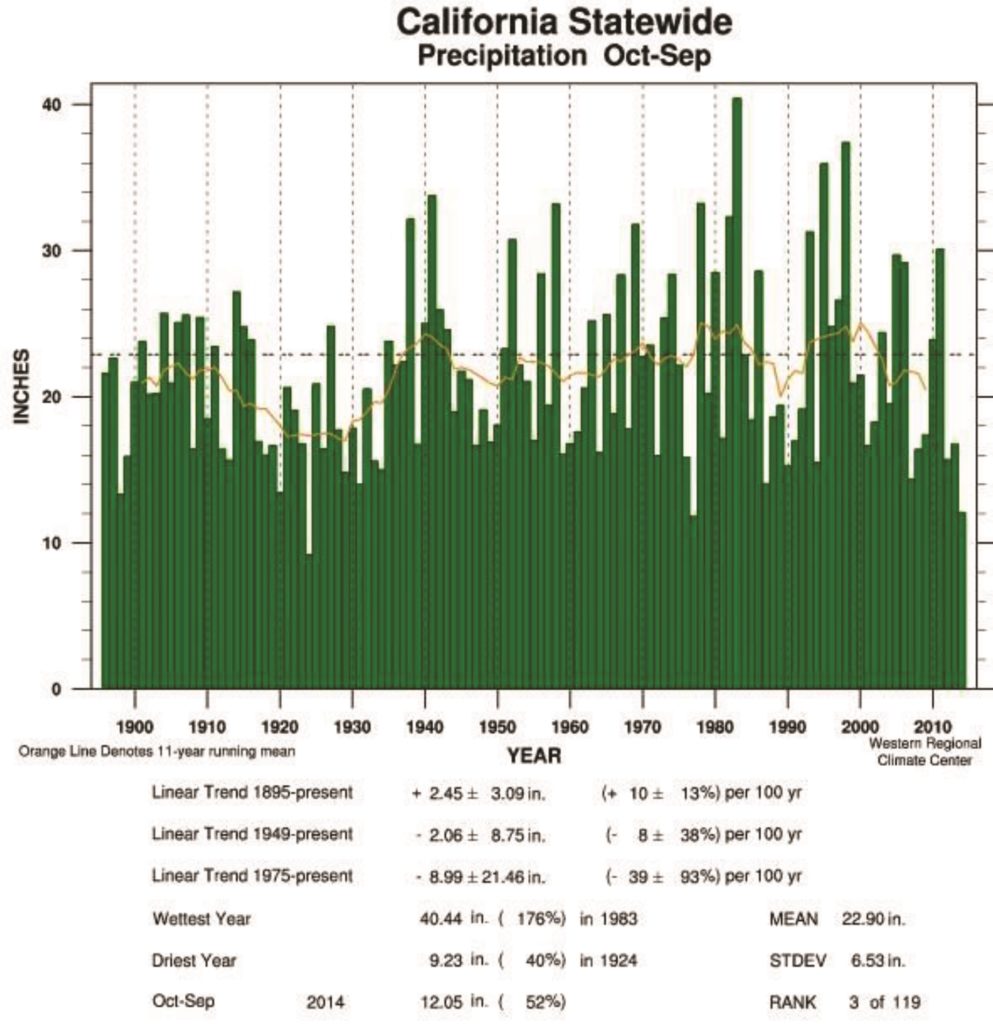Environmentalists are trying to blame the California wildfires on climate change. The real problem is that our forests have not been properly maintained for a long time. The U.S. Forest Service says there are 129 million standing dead trees in California, mostly killed by bark beetle infestation.
When an infected tree dies, the beetles fly to infect more trees. It is vital to quickly remove infected trees. This was normal policy for many years along with selected logging to thin over crowded forests.

Dead pine trees burn explosively, and stands of dead trees drive fires into major infernos, destroying entire forests. Overcrowded forests are unhealthy and greatly enhance the destructiveness of fire.
Environmentalists, using lawsuits, have fought any logging as an “alteration” of nature. Enviro-imposed policies have made the fires massively larger and almost impossible to control. Even Governor Brown has publically called for a return to thinning of forests by logging. This is not “clear cutting,” but is instead, conservative, defensive harvesting.
The idea that the fires are due to climate change is a misleading, largely baseless claim. “Climate change” is a theory of unusual weather due to man-induced warming. The fact is, there has been no sustained or unusual temperature increase globally since 1998. No warming = no unnatural climate change. The lack of warming disproves the climate model predictions. In real science, when observations defy predictions, the predictions are discarded. (Google: “globalwarming pause.”)
Most environmentalists often point to fossil-fuel belching automobiles as being the primary “drivers” (pun intended) of global warming, but NASA climate studies of global temperature show that any warming of the Earth’s atmosphere largely occurred long before the invention of the internal combustion engine.
Likewise, many environmentalists also point to the current drought as evidence for climate change, but fail to mention that the very long term history of California is marked by repeated droughts, some lasting several hundred years. Studies of tree rings, sediment, and other evidence have shown that in the year 840 there was a 240 year long drought only to be followed by a 180 year drought 50 years later. In more recent times we experienced droughts in 1841, 1864, 1924, 1928–1935, 1947–1950, 1959–1960, 1976–1977 and 2006–2010.

The fact is, California is and has always been, prone to drought periods, yet this reality seems to have escaped the attention of our current elected representatives. And as the state’s population increases (another elected representative miscalculation, aka “open borders”) sound water policies become increasingly important.
The period of modern habitation has actually been a relatively wet period, compared to the very long term. The high risk of future droughts should motivate us to demand a return to proper forest management and to build vital new water storage throughout California.
USFS 129 million dead trees https://www.fs.usda.gov/Internet/FSE_DOCUMENTS/fseprd566303.pdf
I would also encourage you to watch the video posted at the bottom of our Home page that discusses the topic of Climate Change/Global Warming.
Dear Marti Roach,
Thank you for your comment regarding our “Dead Tree Crisis” article that appears in the December issue of ALIVE. At ALIVE, we encourage honest, reasonable, rational debate about topics such as this that are sometimes controversial. ALIVE Magazine is not, nor does it claim to be, nor it is represented as a “news/reporting” publication. The article by Mr. Fernwood is an “opinion” piece. That said, in my limited understanding of science and how its processes function, the voices of minority points of view regarding what is to be taken as “fact” are of critical importance. Being “angry” that someone might not agree with “consensus” conclusions is the reason Galileo was imprisoned because at that time, 97% of the most respected scientific community “knew” his ideas were wrong. In fact, they were “dangerous!” Again, my understanding is that it is by way of challenging largely accepted ideas that true scientific progress is made. As far as I know, scientific principles care not about statistics. So if 97% of scientists are long convinced that the universe exists in a “steady state,” then along comes some single maverick with a “radical” notion of a “big bang,” do we stay with the steady state model because the majority says so? Copernicus, Pasteur, Lister, Einstein, Hawkins… none were part of the “97%” in their time. Lastly, I would argue that when people become “angry” towards others for questioning so-called “settled” science, they have departed from the realm of rational, healthy scientific debate, into the area of emotional insecurity and dogmatic thinking. Again, thank you for your comment. I appreciate that you took the time to voice your opinion. Eric Johnson, publisher
I am angered that this publication would allow as credible reporting the views of a climate denier as you did in publishing this article. There is overwhelming -97%- consensus among scientists that climate change is causing global warming from primarily human causes. This scientific consensus comes from scientists that specialize in earth sciences and understand various aspects of our complex earth system. There is also recognition that the fingerprints of human caused climate change are on the current drought cycle which has set conditions for the new, extreme wildfires we are seeing. The devastation of the bark beetle, due to drought conditions, created an unprecidientd number of dead tress in the Sierras and clearing these dead tress has been a challenge. There is no disagreement among experts that better forest management is needed to prevent future fires. However, we also have to increase efforts to get off fossil fuels that are exacerbating drought and fires. Lastly, we have to wrestle with our land use policies that have enabled building homes in fire pathways, increasing the likelihood that homes and lives will be endangered in these increasing fires we are seeing and will continue to see.